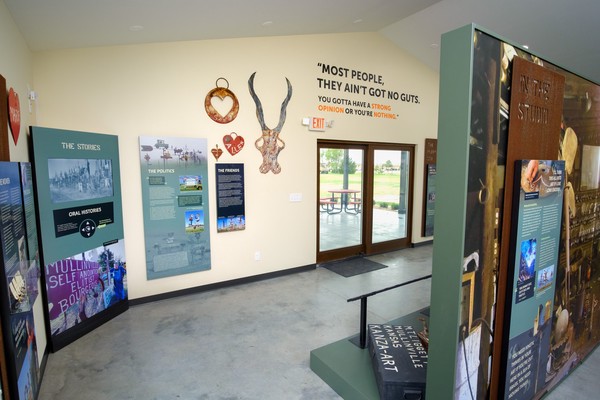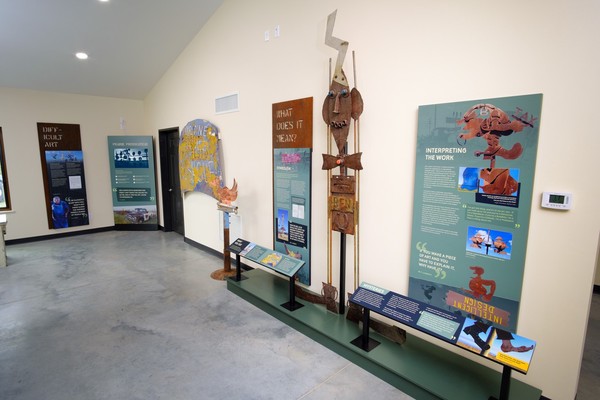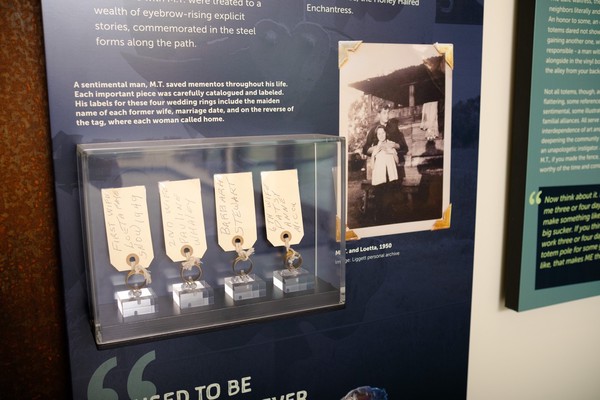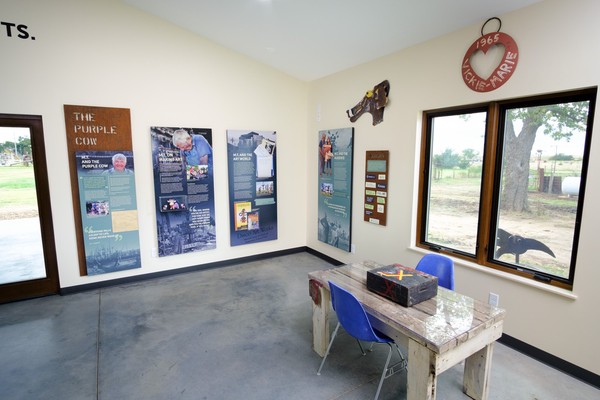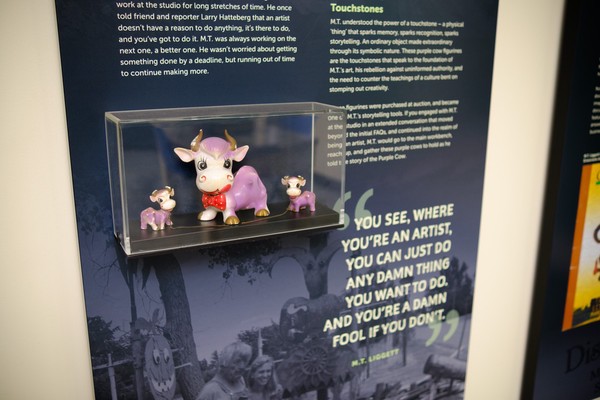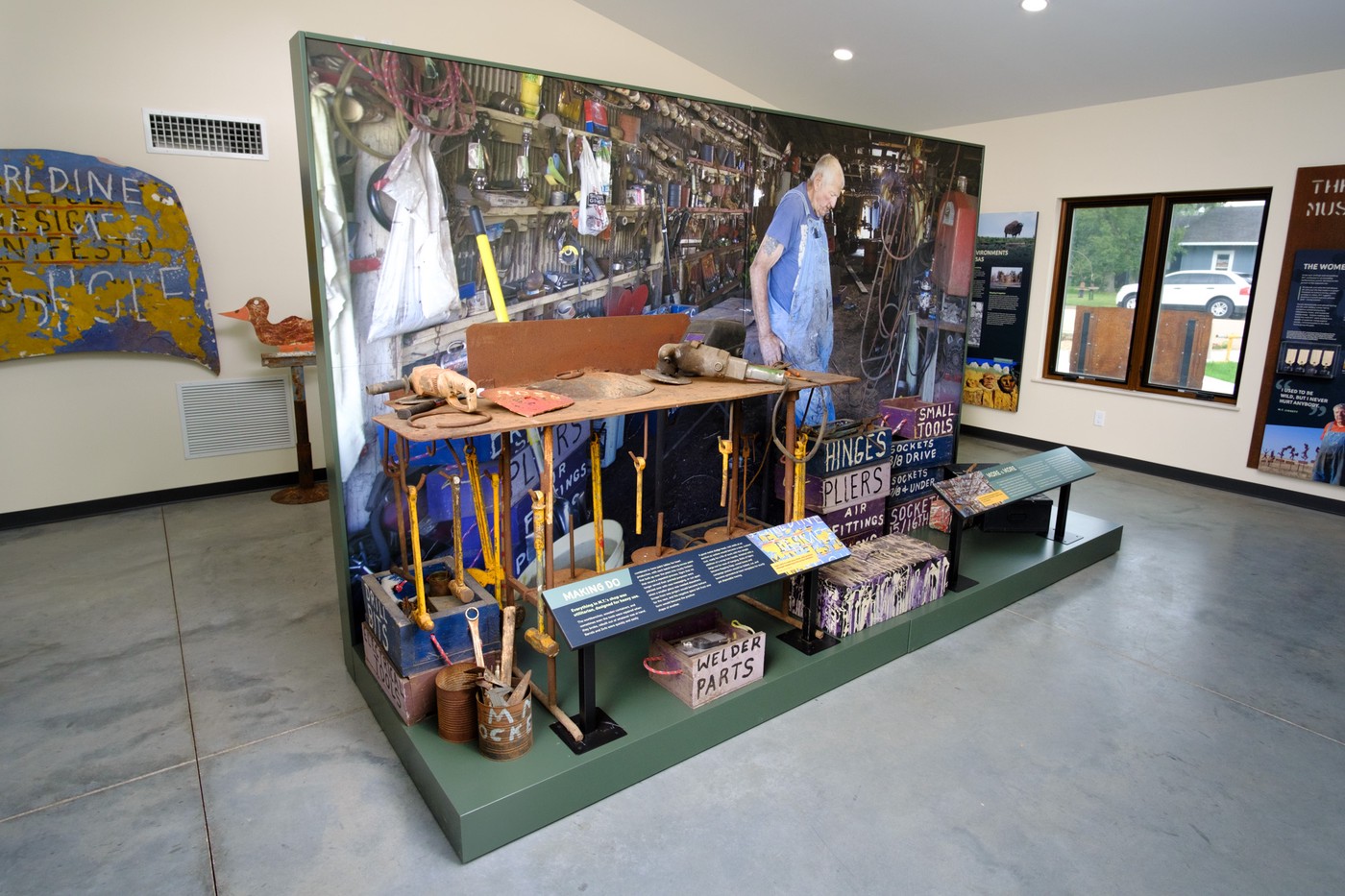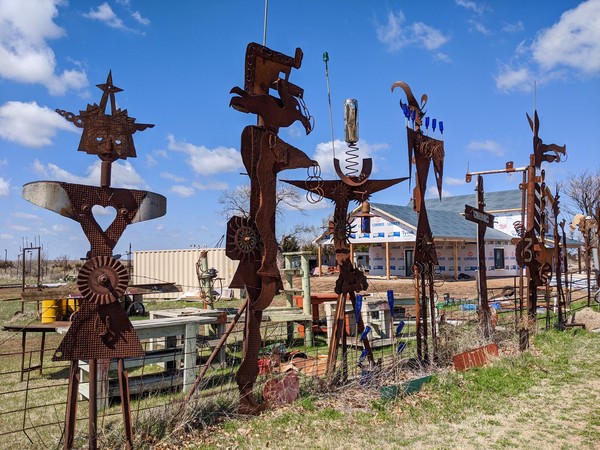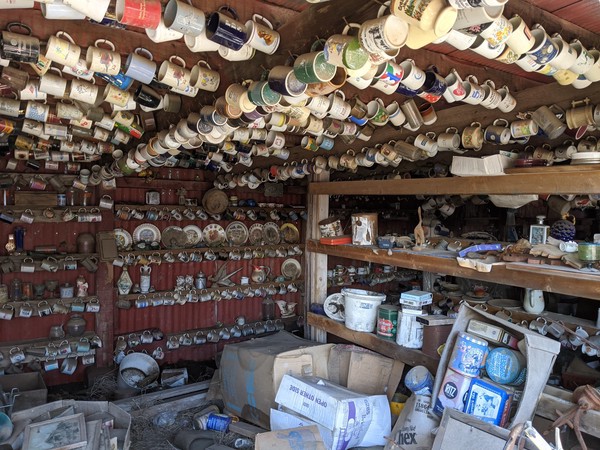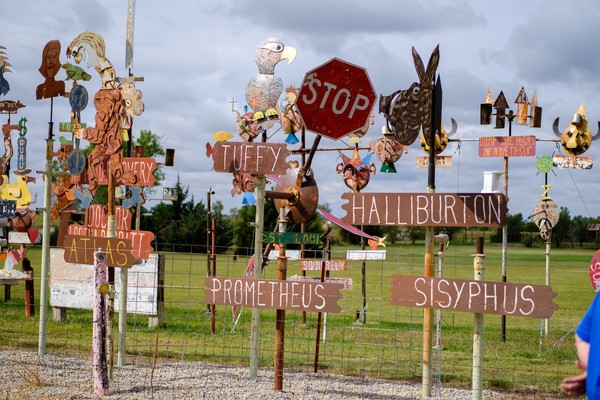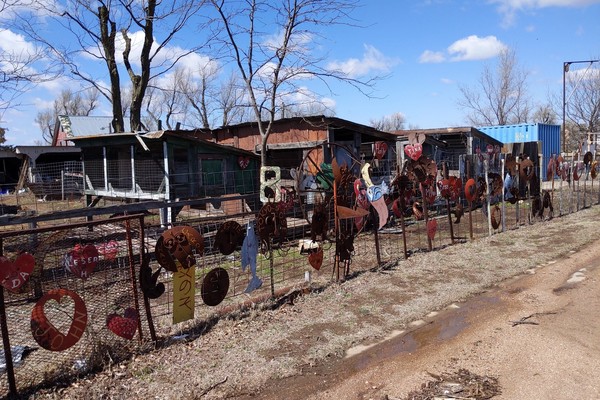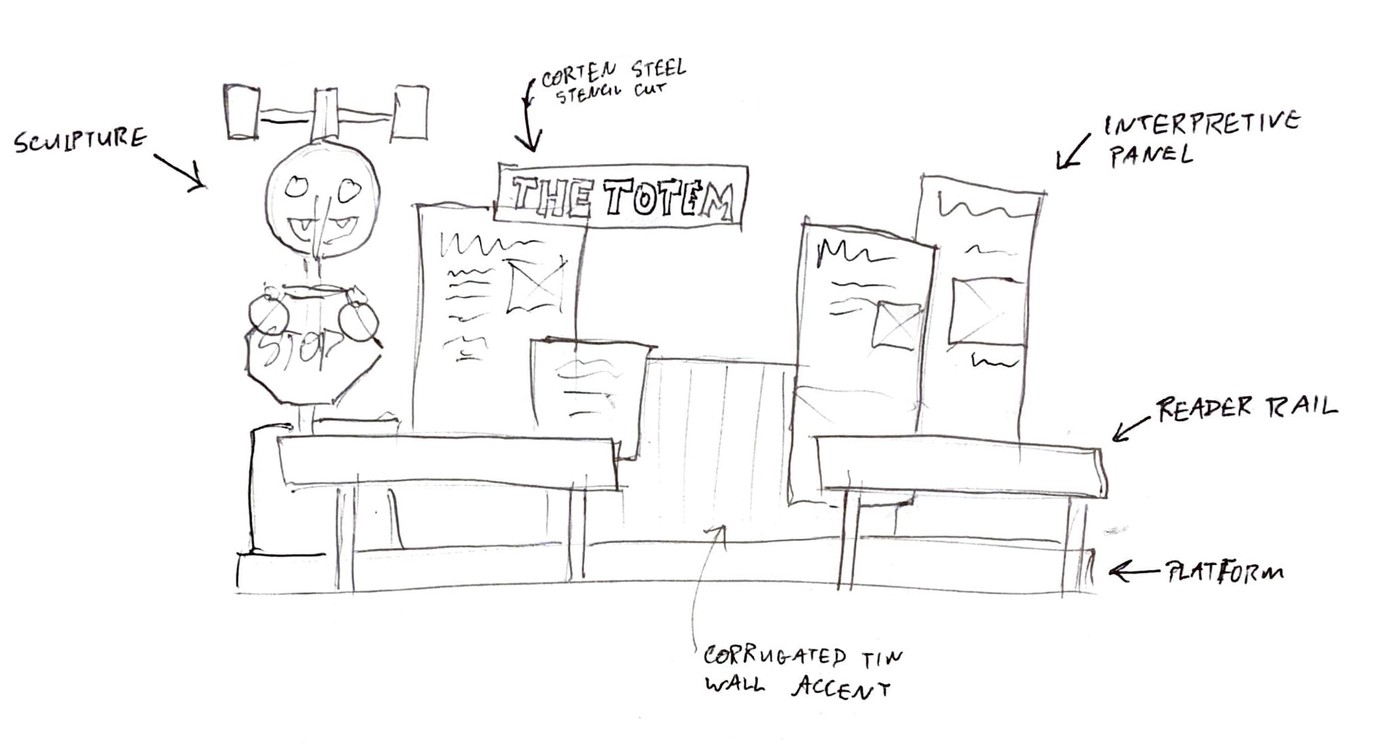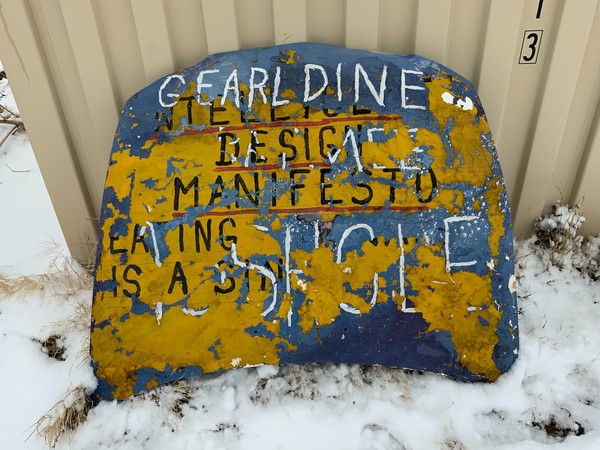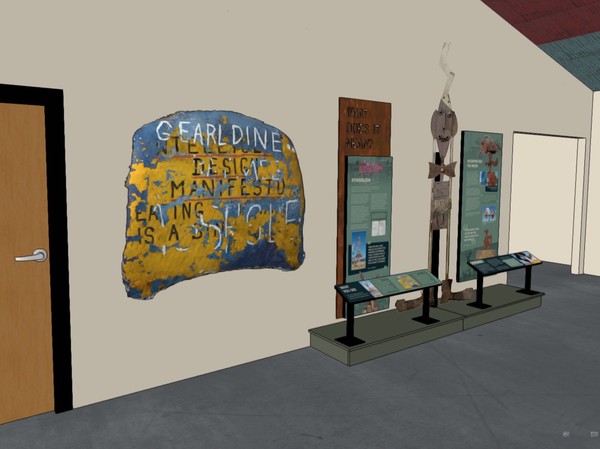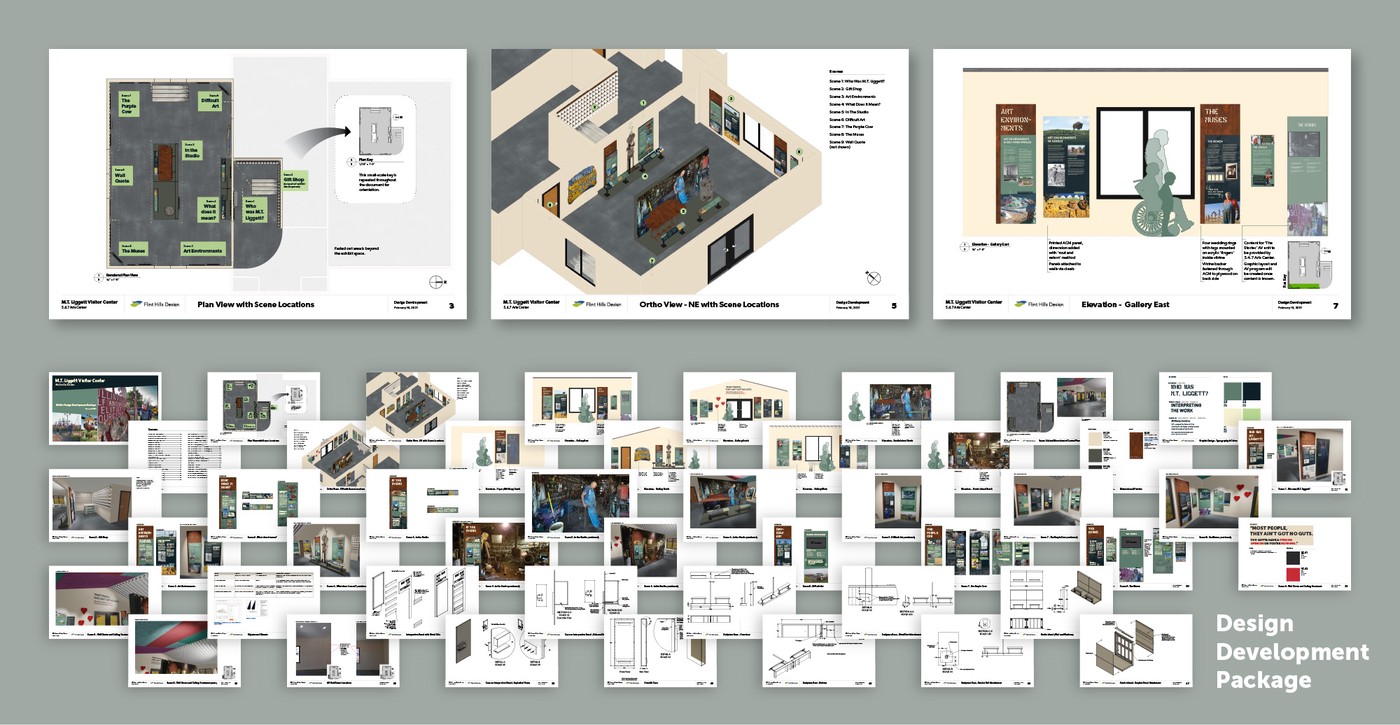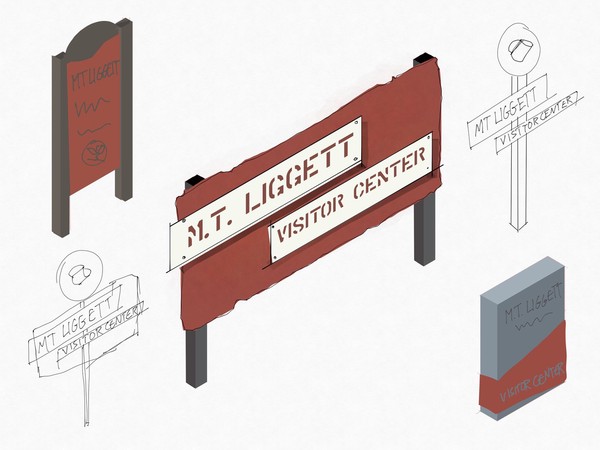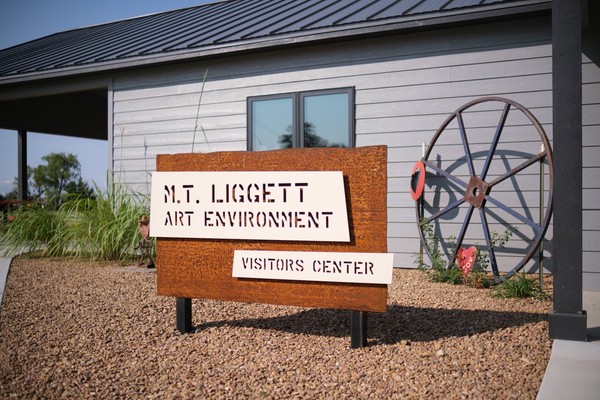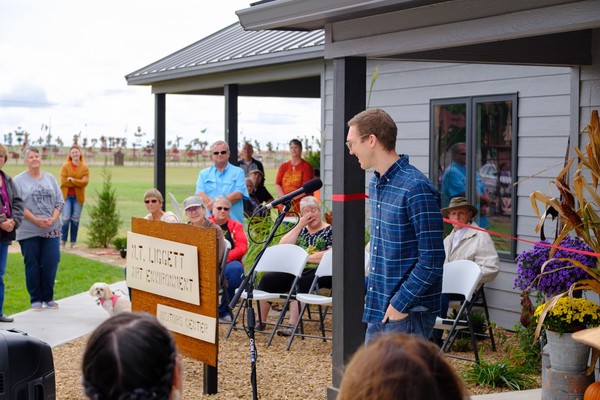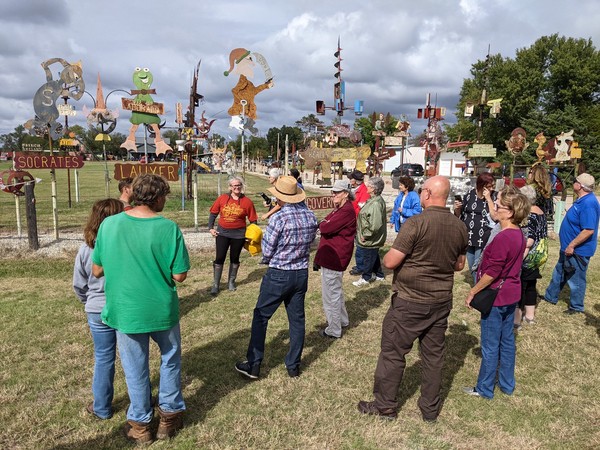M.T. Liggett was an endlessly quotable provocateur known for his prolific roadside display of political sculptures. In his own words:
I’m M.T. Liggett from Mullinville, Kiowa County, Kansas, and I do iron sculpture work. Some people call it folk art, some people call it outsider art, some people call it a roadside attraction, you can just call it anything you want to.
And on another occassion he aptly described his personality, “If you walk up to me and say you’re a Democrat, I’m a Republican. If you’re a Buddhist, I’m a Shinto. If you’re a Catholic, I’m a Protestant.”
Several years after his passing, The Kohler Foundation took up the restoration and preservation of the art environment Liggett had created during his lifetime. A new visitors center was also erected on the site of his studio, and it featured space for an artist in residence and a gallery which was in need of filling. Liggett’s artworks were primarily intended to be experienced outdoors, so the Kohler Foundation’s local partner, 5.4.7. Art Center of nearby Greensburg asked the team at Flint Hills Design—including myself—to design and build an exhibit to convey Liggett’s backstory, provide a hint of the nuance to the audacious messages of his artworks, and include the perspective of locals impacted by Liggett’s provocations.
My role spanned the breadth of the exhibit project from the first on-site inquiry meeting to the grand opening as exhibit designer and project manager.
While the exhibit was a clearly distinct entity from Liggett’s own artwork, rusted metal served as a potent material connection. The text for section titles were laser-cut into panels of weathering steel which was then sprayed with a solution formulated to expedite the oxidation process (akin to a treatment Liggett himself performed on some sculptures).
The exhibit displays several smaller artworks, wedding rings from many (but not all!) of Liggett’s wives, and purple cow figurines that Liggett would bring out as visual aids when telling a childhood story of being ridiculed by his art teacher for drawing a purple cow with the only crayon he had, a formative experience. A studio recreation vignette portrays a small selection of tools and custom storage crates painted with Liggett’s signature lettering. 5.4.7 Arts Center and the Friends of M.T. Liggett group were key to fleshing out the studio recreation and adding many of the artworks throughout the gallery.
Two A/V units present a number of documentaries about Liggett as well as a series of interviews filmed specially for this exhibit by the Kiowa County Media Center that give insight into Liggett’s complicated relationship to the local community.
Behind the scenes
Cursory research into M.T. Liggett brought up enough contentious material to make the Flint Hills Design team hesitant to join the project. However, Ann Dixson and Stacy Barnes of the 5.4.7 Arts Center shared their clear-eyed vision for the art environment and the legacy of its flawed creator. While the artwork along with its frequently offensive messaging were being preserved, the objective wasn’t to memorialize or promote the controversy. Instead they were seeking to show visitors a glimpse beyond the bold statements into the backstory of the artist. To tell of his motivation to “wake people up” and provoke them to think. To celebrate the originality of his prolific creative output and his promotion of self-expression by all. And to allow space for the voices of the community members that he antagonized.
My first visit to the site was a flood of eccentricities: quirky artwork along the road, kitschy mugs galore, once flamboyantly painted but now derelict outbuildings, and piles of what some might consider junk that had been the raw material for the artist. Liggett was an avid collector of mugs, perhaps amassing the largest collection in the world.
Taking the themes and primary topics that emerged and were massaged into shape by Nathan Bartel, I continued on to draft a concept for the physical space and exhibit components. From the beginning I was excited to play with weathered metal as an evocative through-line from the artworks outside to the exhibit within the center.
Defining the physical components came quickly which brought several advantages for understanding the potential scale of the project and estimating the amount of content that would need to be developed. The exhibit concept was depicted in the animated walk-through video shown below.
Several elements didn’t make it through from concept to realized exhibit such as the full ceiling of mugs and corrugated tin. But in large part it served as a stable vision that guided the process.
To accommodate special events in the gallery, the central island splits in half and can be moved aside to open up floor space.
Erika Nelson was brought on to curate the exhibit, write the text, and procure images and other media. Graham Unruh did an excellent job transforming the content into attractive graphic layouts to replace the placeholders in the concept. Original videos were produced by Alex Lansdowne and the Kiowa County Media Center.
I’ve been dabbling with LIDAR technology to scan spaces and objects into digital 3D models. For the Liggett exhibit I applied this method to a painted car hood sign. Scanning it resulted in a properly sized model so that it could be accurately placed in the digital mockup of the gallery.
Before moving on to the fabrication phase, I assembled a design package of all the renderings, elevation drawings, graphic layouts, and plans for physical components that had been developed during the design phases. Graham plugged in sections for graphic design styles including paint colors and finishes.
Flint Hills Design also created an outdoor welcome sign for which I contributed early foundational ideas. Graham pushed the design further and worked with Isaac Entz to produce the sign. Fabrication for the indoor exhibit was by Dan Miller, Jocelyn Wilkinson, and Mark Andres. Joel Gaeddert provided oversight and additional management.
At the ribbon cutting for the visitor center, I was honored to pitch in a few words about the exhibit to the lineup of speeches by those involved with Liggett’s art environment preservation and ongoing legacy.

